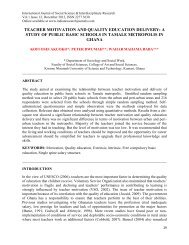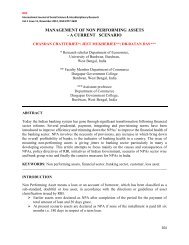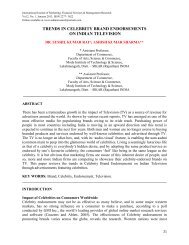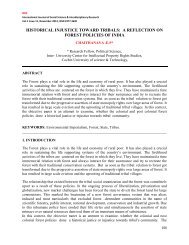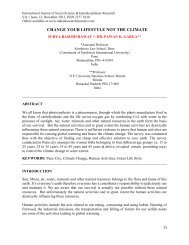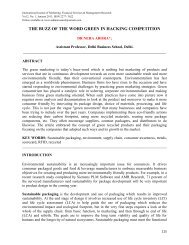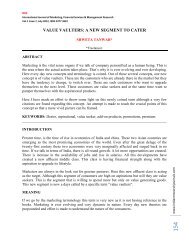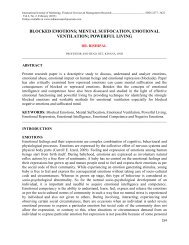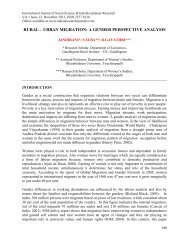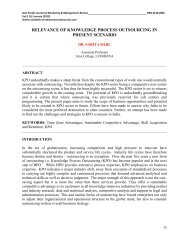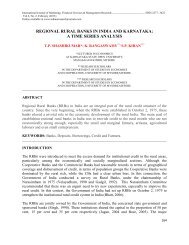PEACE EDUCATION AND HUMAN RIGHTS IN TWENTY FIRST ...
PEACE EDUCATION AND HUMAN RIGHTS IN TWENTY FIRST ...
PEACE EDUCATION AND HUMAN RIGHTS IN TWENTY FIRST ...
Create successful ePaper yourself
Turn your PDF publications into a flip-book with our unique Google optimized e-Paper software.
International Journal of Social Science & Interdisciplinary Research<br />
Vol.1 Issue 12, December 2012, ISSN 2277 3630<br />
Online available at www.indianresearchjournals.com<br />
Conflict, violence and peace can be investigated at several levels. One simple<br />
categorization refers to conflict, violence and peace at the interpersonal level, and the<br />
structural / institutional level.<br />
Interpersonal: Interpersonal conflict and violence can occur in everyday personal<br />
interaction, whether it is in the family, the school, the workshop or other everyday<br />
location. For students, bullying can be obvious and painful, but incidental conflicts can<br />
be even more prevalent. In schools, peaceful solutions to these forms of conflict and<br />
violence can be sought using conflict resolution strategies.<br />
Structural / institutional: At the structural / institutional level, conflict and violence can<br />
often be „indirect‟. It is this form of violence – often framed by issues of class, race,<br />
religion or gender – that can be studied profitably using the approaches of the „critical<br />
pedagogies‟ and the „socially critical curriculum.‟<br />
Advocates of critical pedagogies focus on the ways in which ideologies function in<br />
society to serve some people‟s interests, while thwarting others. Ideological benefits, it is<br />
pointed out, can be so powerful that they are „taken for granted‟ and appear „normal‟ and<br />
„natural‟. When they are so powerful these ideological beliefs take on the status of<br />
„hegemony‟. One historical example of a hegemonic belief is the nineteenth century<br />
belief that women were intellectually, emotionally and physically inferior, and thus not<br />
entitled to „normal‟ civic and legal rights. A current example of a hegemonic belief is the<br />
acceptance that it is „natural‟ for different people to be paid vastly different salaries or<br />
wages for their daily work. For example, students might be encouraged to investigate<br />
phenomena such as:<br />
<br />
<br />
<br />
<br />
<br />
<br />
<br />
Whether boys and girls are encouraged to different in interests,<br />
temperament, behavior and aspiration.<br />
The types of advertising on television during children‟s programs.<br />
The proliferation of large shopping centers and the disappearance of<br />
local shops.<br />
Connections among young people‟s diets, activities and health.<br />
Proposals to increase government financial assistance to parents of<br />
young children.<br />
Laws to limit gun ownership by citizens.<br />
The granting of native title to indigenous people.<br />
4.4 Visioning peaceful futures:<br />
Peace education is future oriented. It aims to help people create more peaceful lives-<br />
Personally, socially, globally. It‟s not surprising that some of the most significant peace<br />
educators are also futures educators. David Hicks, pioneering British peace educator,<br />
collaborated with leading Australian futures researcher Richard Slaughter to publish the World<br />
Yearbook of Education 1988 on „Futures Education‟. Leading Australian peace educator and<br />
researcher Frank Hutchinson combined the two fields in his Educating beyond Violent Futures<br />
(1996).<br />
202



